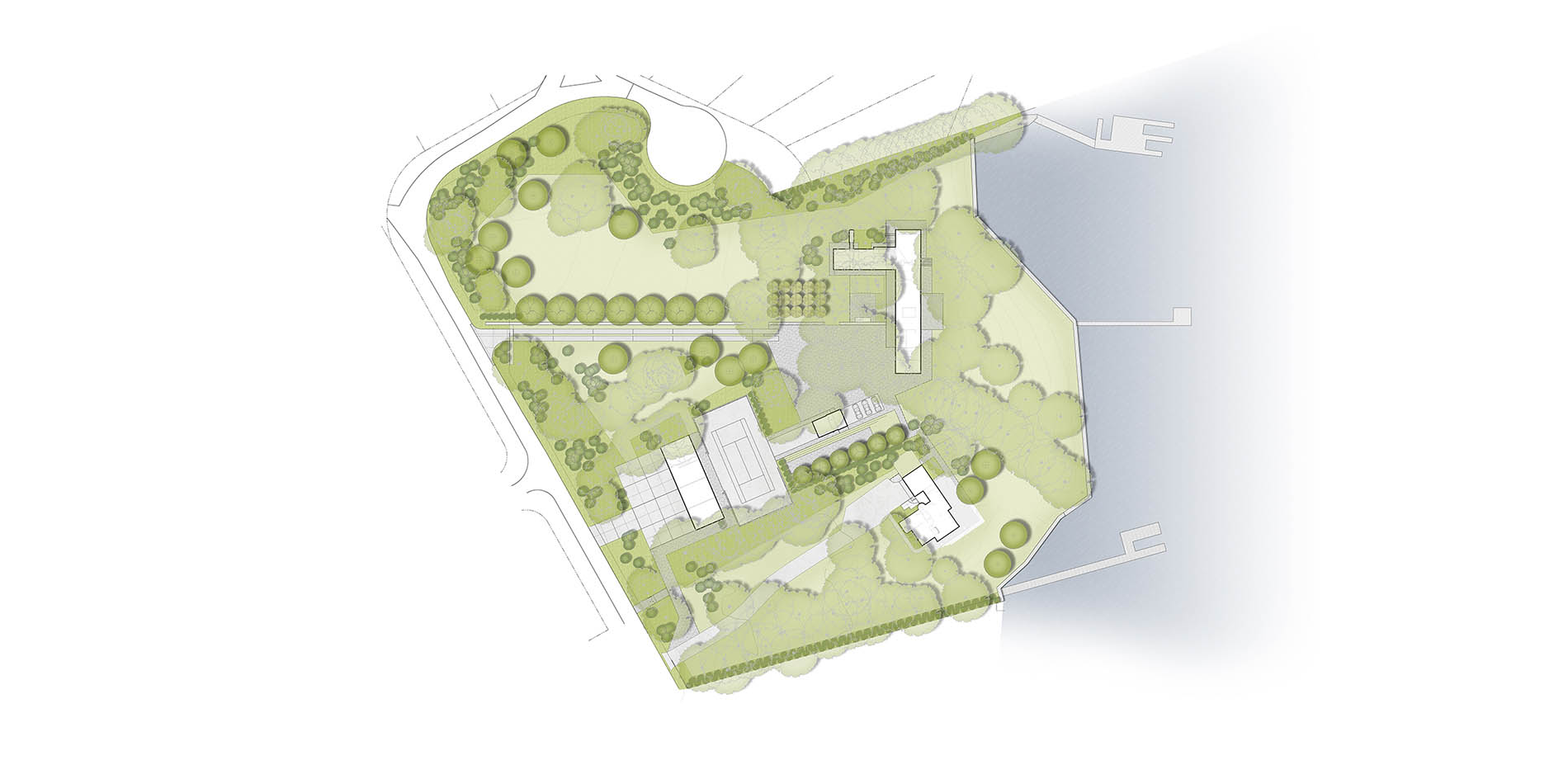
Site Plan
Photo Credit: Hocker Design Group, Robert Yu, Justin Clemons
Media: Please submit high-resolution image requests to images@asla.org.
View from sunken courtyard and cantilevered fireplace back to the house.
Photo Credit: Hocker Design Group, Robert Yu, Justin Clemons
Media: Please submit high-resolution image requests to images@asla.org.
View of house entry.
Photo Credit: Hocker Design Group, Robert Yu, Justin Clemons
Media: Please submit high-resolution image requests to images@asla.org.
House nestled within existing trees.
Photo Credit: Hocker Design Group, Robert Yu, Justin Clemons
Media: Please submit high-resolution image requests to images@asla.org.
Bocce ball court looking towards the lake.
Photo Credit: Hocker Design Group, Robert Yu, Justin Clemons
Media: Please submit high-resolution image requests to images@asla.org.
Bocce ball court at night.
Photo Credit: Hocker Design Group, Robert Yu, Justin Clemons
Media: Please submit high-resolution image requests to images@asla.org.
View of motor court and pavilion.
Photo Credit: Hocker Design Group, Robert Yu, Justin Clemons
Media: Please submit high-resolution image requests to images@asla.org.
Sunken courtyard with fireplace element.
Photo Credit: Hocker Design Group, Robert Yu, Justin Clemons
Media: Please submit high-resolution image requests to images@asla.org.
Cobblestone entry and stone wall.
Photo Credit: Hocker Design Group, Robert Yu, Justin Clemons
Media: Please submit high-resolution image requests to images@asla.org.
Dichondra planting in cobblestone joints.
Photo Credit: Hocker Design Group, Robert Yu, Justin Clemons
Media: Please submit high-resolution image requests to images@asla.org.
Motor court view upon arrival.
Photo Credit: Hocker Design Group, Robert Yu, Justin Clemons
Media: Please submit high-resolution image requests to images@asla.org.
View from motor court, looking down the drive.
Photo Credit: Hocker Design Group, Robert Yu, Justin Clemons
Media: Please submit high-resolution image requests to images@asla.org.
View from driveway looking at house beyond.
Photo Credit: Hocker Design Group, Robert Yu, Justin Clemons
Media: Please submit high-resolution image requests to images@asla.org.
Custom steel gate and water jet out “barcode”.
Photo Credit: Hocker Design Group, Robert Yu, Justin Clemons
Media: Please submit high-resolution image requests to images@asla.org.
Green screen at perimeter of tennis court.
Photo Credit: Hocker Design Group, Robert Yu, Justin Clemons
Media: Please submit high-resolution image requests to images@asla.org.
Night view looking at the house.
Photo Credit: Hocker Design Group, Robert Yu, Justin Clemons
Media: Please submit high-resolution image requests to images@asla.org.



















